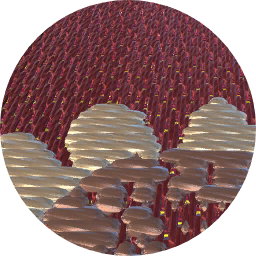Description
EMBROIDERED SKIRT
Dated 1757
The top pleated edge of this skirt is intended to be worn not around the waist but higher, under the arms, held in place by shoulder straps. It is constructed from five loom-widths of a mixed cotton and linen. The opening down the middle of the central width would have allowed room for it to be put on, and also facilitated breast-feeding.
Linen and cotton embroidered with silk
Signed Maria Papadopoula and dated 1757
Crete
Collected by Thomas Sandwith, British Consul-General in Crete from 1870 to 1885, and given by his granddaughter Miss P Boys-Smith.
Museum no. T.97-1967 [2007]
Linen skirt dress embroidered in silk, made by Maria Papadopoula, Crete, Greece, 1757
Linen skirt dress with a floral border embroidered in blue silk. The name of the embroiderer 'Maria Papadopoula' and the date '1757' are included in the border. A tuck has been put into the garment to shorten it, so it is now skirt length. The shoulder straps are still attached and the bust is gathered. In Cretan feather, fishbone, satin, chain, back, double running and whipped stitches and French knots. Frieze of alternating vases of flowers. Made up of five loom widths of linen and cotton
This skirt was collected by Thomas Sandwith, British Consul-General in Crete from 1870 to 1885, and given to the Museum by his granddaughter. It is signed in embroidered stitches by its maker, Maria Papadopoula, and dated 1757.
The top pleated edge is intended to be worn not around the waist but higher, under the arms, held in place by shoulder straps. It is constructed from five loom-widths of a mixed cotton and linen. The opening down the middle of the central width would have allowed room for it to be put on, and also facilitated breast-feeding.








